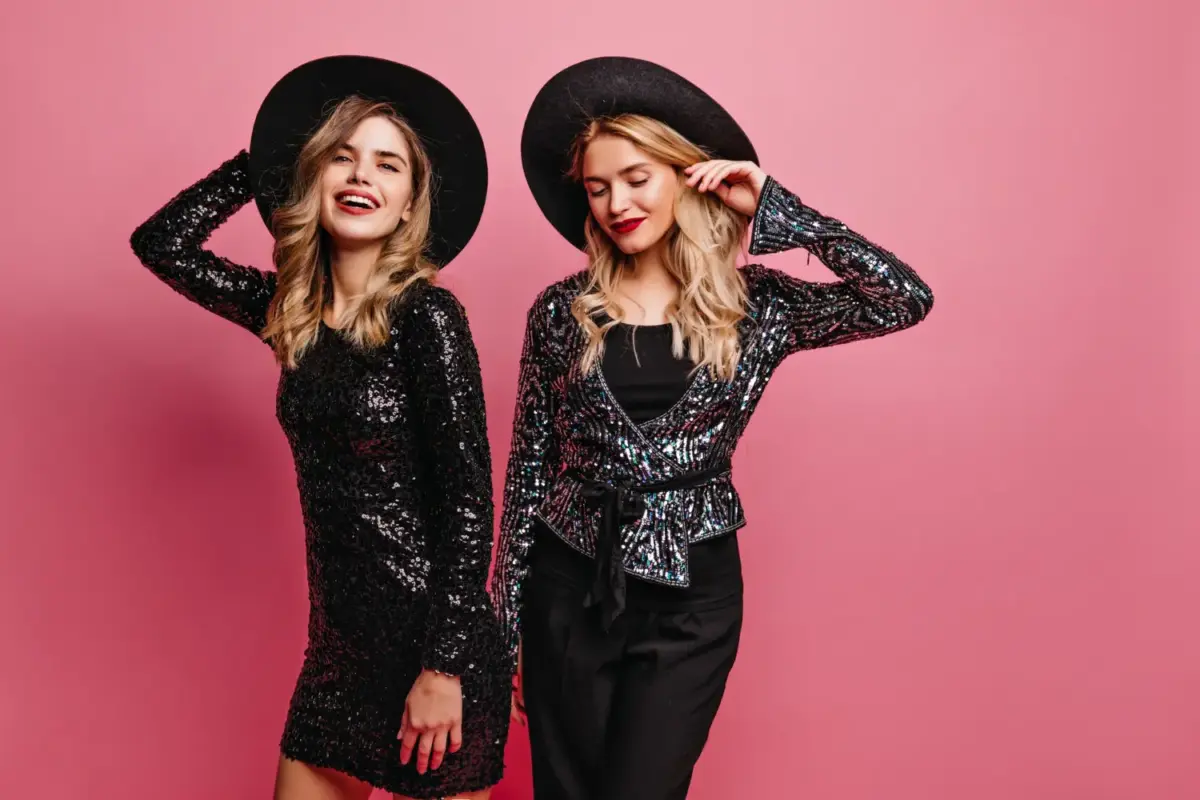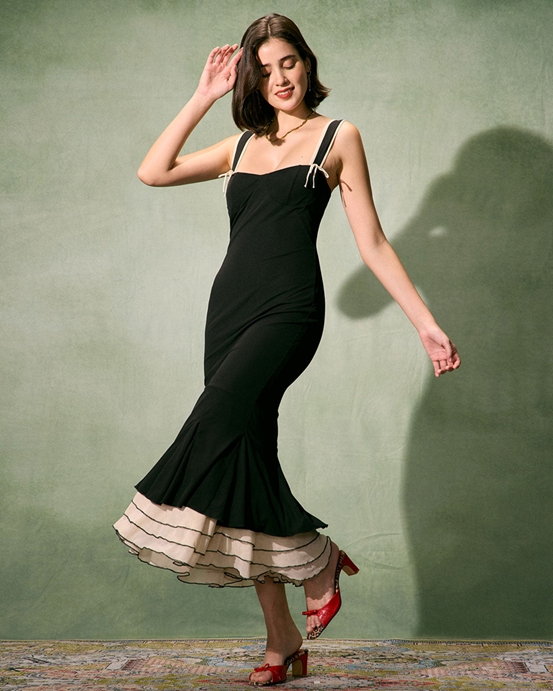When you stand before your closet each morning, you’re doing more than selecting fabric and silhouettes—you’re choosing how to communicate nonverbally with the world. At Rvchicly, we design with intention behind every hue, understanding that color is perhaps the most powerful tool in the fashion language. Today, we explore the fascinating relationship between color psychology and women’s fashion choices, and how these chromatic decisions impact both how you feel and how others perceive you.
The Science Behind Color Psychology
Color psychology isn’t simply fashion folklore—it’s backed by extensive research in cognitive psychology and neuroscience. Studies consistently demonstrate that color influences human emotion, cognition, and behavior in predictable patterns, though these effects are mediated by personal experience and cultural context.
“Our brains process color before we consciously register shape or text,” explains Dr. Amira Chen, cognitive psychologist specializing in visual perception. “This means your outfit’s color creates an impression milliseconds before any other element registers.”
This unconscious processing explains why color wields such profound influence on both the wearer and the observer. When we understand these dynamics, we can make more intentional choices about the nonverbal messages we send through our wardrobe.
The Emotional Impact of Key Colors
Each color carries distinct psychological associations that can be strategically employed in your wardrobe:
Red: Power and Passion
Red increases heart rate and energy while signaling confidence and determination. In professional settings, a strategic touch of red (like our Rvchicly Ruby Statement Blazer) communicates leadership and decisive action. Studies show that wearing red can actually increase testosterone levels and dominant behavior, creating a physiological foundation for confidence.
When to choose red: Presentations, negotiations, first dates, or whenever you need to project authority or passion.
Blue: Trust and Competence
Blue consistently ranks as the most universally appealing color, associated with dependability, calm, and intelligence. In professional environments, navy and medium blues signal competence and reliability without the dominance signaled by darker shades like black.
Our Rvchicly Azure Collection utilizes varying blue intensities to create pieces that project professional authority while maintaining approachability—a delicate balance many women in leadership positions aim to achieve.
When to choose blue: Job interviews, client meetings, situations requiring trust-building or stress reduction.
Black: Sophistication and Authority
The perennial fashion favorite isn’t just slimming—it signals authority, exclusivity, and sophistication. Research shows that people wearing black are consistently rated as more confident, intelligent, and authoritative. However, in certain contexts, all-black ensembles can create distance or seem unapproachable.
When to choose black: Evening events, high-stakes professional scenarios, creative industry functions.
Yellow and Orange: Optimism and Creativity
These sunshine hues trigger dopamine release, creating positive associations and projecting creativity. While these colors draw attention, they should be strategically deployed based on your specific objectives and setting.
“Our Rvchicly Amber Accent pieces are designed specifically for psychological impact,” notes our design director. “They provide the cognitive benefits of these joy-inducing colors without overwhelming the overall palette.”
When to choose yellow/orange: Creative brainstorming sessions, team-building events, casual settings where you want to appear approachable and innovative.
Green: Growth and Balance
Green occupies the center of the visible spectrum, creating minimal eye strain and associations with growth, renewal, and balance. Studies show exposure to green can reduce anxiety and improve reading comprehension, making it both calming and focusing.
When to choose green: Environments requiring sustained concentration, wellness settings, or when mediating between parties.
Personal Color Analysis: Finding Your Power Palette
While understanding universal color associations provides a foundation, your optimal color strategy is uniquely personal, influenced by:
Skin Undertone
Your skin’s underlying hue (warm, cool, or neutral) determines which color families will naturally harmonize with your complexion:
- Warm undertones (golden, peachy, or yellow): Flourish in autumn shades like terracotta, olive, cream, and warm browns
- Cool undertones (pink, red, or bluish): Shine in winter and summer palettes with crisp whites, true blues, emeralds, and blue-reds
- Neutral undertones: Can successfully wear colors from both warm and cool families with slight adjustments in intensity
Our Rvchicly Color Confidence collection features each shade in warm, cool, and neutral variants, ensuring every woman can find her perfect match.
Value Contrast
The natural contrast level between your hair, skin, and eyes determines the contrast level your most flattering outfits should contain:
- High contrast features (e.g., fair skin with dark hair): Look harmonious in outfits with distinct color blocking or sharp value differences
- Low contrast features (e.g., blonde hair with fair skin): Appear most balanced in tonal outfits with subtle transitions between colors
Communication Goals
Beyond physical complementation, consider what you need your clothing to communicate in specific contexts:
- Need to command attention in a presentation? Incorporate your power color strategically
- Want to build trust with a new client? Choose blues that align with your undertone
- Need to display creativity to potential investors? Incorporate calculated color accents that signal innovation without undermining seriousness
Creating Psychological Balance Through Color Composition
The proportional relationship between colors in an outfit creates its psychological impact:
The 60-30-10 Rule
Professional colorists often recommend distributing color in these proportions:
- 60% base color (typically a neutral)
- 30% secondary color (could be another neutral or a mid-intensity color)
- 10% accent color (often the highest impact or brightest shade)
This distribution creates visual interest while maintaining harmony—a principle we employ throughout the Rvchicly collections.
Color Contexts
Remember that colors don’t exist in isolation—they’re perceived in relation to surrounding hues. The same blush pink appears substantially different against navy versus camel. This contextual reality means that building coordinated collections (rather than isolated pieces) creates more versatile and psychologically effective wardrobes.
Seasonal Color Strategy for Maximum Impact
Strategic adjustment of your color palette throughout the year maximizes both versatility and psychological effectiveness:
Spring/Summer
Lighter color values align with longer days and increased natural light. Incorporate:
- More reflective surfaces and lighter neutrals
- Slightly higher color saturation that stands up to natural sunlight
- Colors that appear in the seasonal environment (creating harmony with surroundings)
Fall/Winter
Deeper color values complement reduced natural light without appearing harsh:
- Richer, slightly muted color tones
- Textures that absorb rather than reflect light
- Warming neutrals like camel and chocolate that psychologically counter cooler temperatures
Building Your Confidence Through Intentional Color Choices
The most powerful aspect of color psychology in fashion is its ability to influence not just how others perceive you, but how you perceive yourself. Research in embodied cognition demonstrates that clothing choices affect cognitive processing and performance.
When you understand which colors enhance your natural features while aligning with your communication goals, you create a feedback loop of confidence: You select colors strategically, they enhance your appearance and align with your message, others respond positively to this congruence, and your confidence grows—further enhancing your effectiveness.
“At Rvchicly, we don’t just design clothing—we design tools for nonverbal communication,” our founder emphasizes. “When a woman understands the psychological impact of her color choices, she gains an additional dimension of self-expression.”
Begin your color confidence journey by identifying your most-complimented colors, analyzing your existing wardrobe for patterns, and gradually introducing new hues with intention rather than impulse. Remember that building color confidence takes time, but the psychological benefits—for both your self-perception and how you’re received by others—make this exploration immensely worthwhile.




